There are few tools more powerful, useful, and dangerous than a circular saw. The best circular saws make cutting wood super easy. They can be used for rip cuts, cross cuts, and even detail work in skilled hands.
So, if you’re in the market for a new circular saw, then this is the article for you. Here’s what we’ll show you:
- What to look for in a great circular saw
- The top six circular saws on the market
- Answers to common questions about circular saws
Let’s get started with a quick buyer’s guide so you know what to look for in the best circular saws.
Table of contents
Top Features to Look for in Circular Saws
Most power tools are made in China, Taiwan, or somewhere overseas. They might be assembled here in America. This means most models offer very similar features and the differences are minimal. A smart buyer will look beneath the surface a little bit and try to understand what separates the great tools from the mediocre junk available today.
We want to help you be a smart shopper, so we’ve done the work for you. Here are the top four things to check out as you compare tools.
Blade size
What size lumber are you going to cut most often?
This single question will tell you all you need to know about the size of blade you need. If you’re going to be cutting through 2×4 lumber all day, then a 6-1/2 inch blade or a 7-1/4 inch blade will be fine. These will easily cut through a 2×4 with a little room to spare.
The maximum cutting depth is less than half the diameter of the saw blade, so a 7-1/4 inch blade will cut through about 2-1/2 inches of wood. Don’t work at maximum depth, though. If you’re regularly cutting through thicker wood, get a saw with a bigger blade.
Motor power
The motor’s power will tell you how easily it will cut through wood, which types of wood it will struggle with, and how much “push” you will have to give it as you cut. Most circular saws rate their power now by amps, and a 15-amp saw motor is standard.
Cordless circular saws also use amps and volts, but it’s pretty tough to work out exactly how much this translates to in terms of real-world power. The biggest knock on cordless circular saws is how their power decreases with the battery charge. So you might not get to zero percent charge before the battery loses enough power to be useful.
Safety features
Circular saw blades can run amok very quickly if you’re not paying attention. Somewhere between 14% and 30% of traumatic upper limb injuries are caused by circular saws, so it pays to buy one that has good safety features and then use them. Here’s what to look out for to protect yourself:
- A blade brake is a basic necessity. These stop the spinning blade as soon as your finger lifts off the trigger. An electric brake is better than a manual brake.
- Blade guard use is a must. So find a blade guard that is easy to use, slides properly, and won’t be tempting to remove.
- For framers, a rafter hook is useful, but also a safety device. You can hand your saw easily instead of having to carry it or balance it somewhere.
Most saw injuries come from improper use, so the list of safety features isn’t very long. But a good blade brake and blade guard will help prevent quite a few injuries.
Quality of life upgrades
Quality of life upgrades make your saw easier to use, make more accurate cuts, and will improve the speed and quality of your work. Here are some of our top choices for things to buy:
- A laser guide to mark your cut line. A single beam laser guide is becoming standard on most tools and it’s worth every penny. It will help you make straight cuts much easier.
- A worm drive saw is preferred by many framers because of how the blade’s position changes. It’s easier to see the cut without leaning over the saw, which can be useful at awkward angles.
- Pay attention to the dust port and its location. You don’t want the dust blowing into your eyes, even if you do wear safety glasses all the time.
- Precut angle marks and depth guides will help you make adjustments faster. If you make regular bevel cuts or swap between board thicknesses, then these stops will help you avoid a few measurements.
- A spindle lock can make blade changes much faster. A lot of us won’t need an F1 style blade change, but if you know you’ll change blades frequently, this is a useful feature.
That’s about it for extra features. Circular saws are pretty basic tools, but these upgrades will make them more pleasant to use.
Cordless Circular Saw vs Corded Circular Saw
In the shop, I grab my corded circular saw for its non-stop power and durability during heavy cuts. It’s a workhorse, but the cord is a hassle. Out in the field, the cordless saw is a lifesaver. It’s lighter, and I can take it anywhere without worrying about finding an outlet. Just keep an eye on the battery life.
Here’s a few more things to think about:
- Corded tools almost always have more power than a comparable cordless model. So, if consistent power is a big requirement, you should always opt for a corded model.
- Cordless tools are brilliant for light cutting, moving around a job site, and are far more portable than their corded counterparts. If you’re only using your tool for a few dozen cuts in a day, then a cordless tool is more convenient than any of the corded models.
Circular Saws Compared to Other Power Tools
Circular saws are the bread and butter for any woodworker. They’re quick, versatile, and cut through lumber like butter. They don’t replace every tool, but they sure are handy compared to others for certain jobs.
Circular Saw vs Table Saw
Need a quick cut on a 2×4 or to slice through plywood on the job site? I reach for my circular saw. But for ripping long boards or batch cutting, the table saw is king. It’s all about control and precision – the table saw’s got it.
Circular Saw vs Jigsaw
When it’s time to cut curves or complex shapes in thinner boards, it’s the jigsaw’s time to shine. But for fast, straight cuts or slicing through thicker stock, the circular saw is my go-to. It’s about speed and power with the circular saw, finesse with the jigsaw.
Circular Saw vs Miter Saw
Angled cuts? Trimming? I head to the miter saw for accuracy and ease, especially for repeat cuts. But when I need to cut a board right where it is, or I’m working with something too big for the miter, the circular saw is my best friend. It’s less about the perfect angle and more about convenience and portability.
Top Circular Saw Models in 2024
Our craftspeople at Artisan Born have thousands of hours of experience testing, using, and even breaking tools. Do these reviews have affiliate links in them?
Yes, but they don’t come from a computer nerd sitting halfway around the world. Our reviews are based on real-world experience with almost every power tool you can imagine.
Let’s get started with our pick for the overall best circular saw you can buy today.
DEWALT 20V MAX Battery Starter Kit with Circular Saw
The DEWALT Circular Saw Kit combines high-performance batteries with a robust cordless DEWALT circular saw. Circular saws cost good money these days, but buying into the DEWALT battery system as a power source could save you money on other tools in the range.
Detailed Product Description
The kit includes two 20V MAX 5.0Ah XR batteries, renowned for their long-lasting capacity. These batteries are versatile, charging all 12V, 20V, and 60V MAX DEWALT batteries. Cordless tools are getting better and better. The circular saw features a brushless motor, ensuring optimal cutting performance across various materials. It’s designed for high maneuverability, thanks to its lightweight and compact build. A convenient tool-free bevel lever allows quick adjustments up to 50 degrees. The kit also includes a soft bag for additional tool storage.
Personal Experience and Usage
Using the DEWALT kit has been a game-changer in terms of efficiency and convenience. The batteries provide extended runtime, easily lasting through demanding projects. The circular saw cuts with precision and ease, making it suitable for both professional and home use. Its cordless nature allows for excellent portability and flexibility on job sites.
Pros and Cons
Pros:
- Long battery life with quick charging
- Powerful and efficient circular saw
- Compact and lightweight design for ease of use
- Versatile charging capabilities for various DEWALT batteries
Cons:
- Higher price point compared to some competitors
- The storage bag, while spacious, could be more durable
- Limited to DEWALT batteries for charging
- The initial setup of the charger can be confusing
Comparative Analysis
Compared to similar products, like the SKIL 20V Cordless Circular Saw Kit, the DEWALT kit stands out for its battery efficiency and saw’s power. While the SKIL kit is more affordable, DEWALT offers superior performance and battery life, justifying its higher price.
Customer Feedback and Ratings
Customers rate this product highly, with an average of 4.8 out of 5 stars. Users praise its longevity, performance, and battery life. Some mention the convenience of the included storage bag and the ease of use of the saw. However, a few noted concerns about the price and the initial difficulty in using the charger.
Price and Availability
The DEWALT 20V MAX Battery Starter Kit with Circular Saw is priced at around $347.07 and is available on Amazon, among other retailers.
This DEWALT kit is an excellent investment for professionals and serious DIY enthusiasts. Its power, efficiency, and versatility make it a top choice for a wide range of cutting tasks. While the price may be steep for casual users, the quality and performance justify the cost for those who need reliable, long-lasting tools.
Makita DSS501Z LXT Cordless Circular Saw
The Makita DSS501Z LXT Cordless Circular Saw is a standout tool in Makita’s renowned lineup. This model, designed for precision and ease of use, is a cordless saw that comes with a high-quality TCT blade. Makita is known for high-quality power tools and this is no exception.
Detailed Product Description
This circular saw operates at 18 V with a blade diameter of 136 mm, making it ideal for a variety of cutting tasks. It features a no-load speed of 3600 RPM and offers depth cuts of 51 mm at 90 degrees and 35 mm at 45 degrees. The saw includes an LED job light for improved visibility and a removable dust nozzle for cleaner operation. Its design includes a large lock-off lever and a double safety trigger for enhanced safety and user comfort.
If you are in the compact circular saws market, this is King of the Hill. Its blade depth is just enough to get through a 2×4, but its light weight motor has more than enough power to get through most of your work.
Personal Experience and Usage
In our experience, the Makita DSS501Z is a reliable and efficient tool. Cordless models are always welcome in our shop since we share tools around. It’s particularly impressive in terms of its lightweight design, making it easy to maneuver. The LED light is a great addition for working in dim conditions, and the saw handles a variety of materials with ease, providing clean and accurate cuts.
Pros and Cons
Pros:
- Lightweight and easy to maneuver
- High-speed steel blade for precise cutting
- LED job light enhances visibility
- Safety features like the lock-off lever and double trigger
Cons:
- Sold as a tool-only unit; batteries and charger must be purchased separately
- Limited cutting depth compared to larger saws
- High price point for a tool-only package
- The dust nozzle can be prone to clogging with heavy use
Comparative Analysis
Compared to similar models like the SKIL 20V 6-1/2 Inch Cordless Circular Saw, the Makita DSS501Z offers a more compact design and a higher RPM, but at a higher price. The SKIL saw includes a battery and charger at a lower price point, but Makita’s build quality and precision are superior.
Customer Feedback and Ratings
Customers have rated the Makita DSS501Z very highly, with an average rating of 4.8 out of 5 stars. Users often highlight its power, compact design, and cutting accuracy. However, some have mentioned the inconvenience of purchasing batteries separately.
Price and Availability
Priced at $245.90, the Makita DSS501Z is available on Amazon and other major retailers. Keep in mind that this price is for the tool only.
The Makita DSS501Z LXT Cordless Circular Saw is an excellent choice for professionals and serious DIY enthusiasts looking for a compact, precise, and easy-to-use saw. Its high price as a tool-only offering may be a drawback for some, but for those who already own compatible Makita batteries and chargers, it’s a worthwhile investment.
SKILSAW SPT77WML-01 Lightweight Worm Drive Circular Saw
The SKILSAW SPT77WML-01 is a 15-Amp 7-1/4-Inch worm drive circular saw, notable for its lightweight magnesium construction. A Skil circular saw is a respected brand in power tools. They stand out for their blend of power, durability, and ease of handling.
Detailed Product Description
This corded electric circular saw is designed with high-speed steel blades and offers a cutting depth that can be easily adjusted for various materials. It boasts a 53° bevel capacity, allowing for a wide range of cuts. The saw’s 15 Amp motor provides enough power to efficiently rip through lumber. Additionally, it features an anti-snag lower guard for smooth operation and safety.
Personal Experience and Usage
Our experience with Skil and corded circular saws has been overwhelmingly positive. Its lightweight design significantly reduces fatigue during extended use. The depth of cut system is intuitive, making it easy to achieve accurate cuts. Its power is more than sufficient for cutting through thick materials, and the ergonomic design makes it easy to use. Worm drive saws are great for framing and make lining up your cuts easier than some other saws.
Pros and Cons Pros:
- Lightweight magnesium construction for easy handling.
- Powerful 15 Amp motor for efficient cutting.
- Depth of cut system for precise adjustments.
- Wide bevel capacity enhances versatility.
Cons:
- Being corded limits mobility compared to cordless models.
- High-speed steel blade may require frequent sharpening with heavy use.
- The magnesium construction, while light, might not feel as robust as other materials.
- The anti-snag guard can sometimes interfere with certain cuts.
Comparative Analysis
When compared to other models like the Denali by SKIL 20V 6-1/2 Inch Cordless Circular Saw, the Skil saw is a pro-level circular saw that stands out for its higher power and depth of cut. However, it lacks the portability of cordless models and might be heavier than some compact circular saws.
Customer Feedback and Ratings
This product has received high ratings, averaging 4.8 out of 5 stars. Customers frequently praise its light weight, ease of handling, and power. Some users have noted the limitations of a corded design but appreciate the saw’s overall performance and durability.
Price and Availability
Priced at around $199.00, the SKILSAW SPT77WML-01 is available on Amazon and other major hardware stores.
The saw is an excellent choice for both professional and home use, offering a great balance of power, precision, and ease of use. It is particularly well-suited for users who need a reliable, powerful saw for extended use but want to avoid the fatigue associated with heavier models. While not as portable as cordless alternatives, its performance justifies its place in any tool collection.
BOSCH 7-1/4-Inch Worm Drive Circular Saw CSW41
The BOSCH 7-1/4-Inch Worm Drive Circular Saw CSW41 stands as a testament to Bosch’s commitment to high-quality, durable tools. This Bosch circular saw is designed for both professionals and DIY enthusiasts who seek precision and power in their cutting tasks.
Detailed Product Description
The CSW41 features a magnesium construction, making it lightweight and reducing user fatigue. Its worm drive design offers enhanced accuracy and precision, with the left side blade design providing clear visibility of the cut line. This corded saw delivers 5,300 no-load rpm, yet weighs only 13.2 lbs. The powerful 15-amp motor ensures sufficient torque for various applications. It includes convenient features such as an on-board multi-function wrench for blade and brush changes, and a built-in tool hook for storage between cuts.
Personal Experience and Usage
From my experience, the BOSCH CSW41 is a remarkable blend of lightweight design and powerful performance. The magnesium construction significantly reduces weight without compromising on strength. The worm drive design and left-side blade placement have made my cutting tasks more accurate and efficient. The power output is impressive, handling even the most demanding materials with ease.
Pros and Cons
Pros:
- Lightweight design for ease of use.
- High torque and power with a 15-amp motor.
- Increased accuracy and precision with worm drive design.
- Convenient features like the multi-function wrench and tool hook.
Cons:
- The price point may be high for casual users.
- Magnesium construction, while light, may not feel as robust as heavier materials.
- Limited to corded use, restricting mobility.
- Blade placement might require adjustment for left-handed users.
Comparative Analysis
When compared to similar models like the SKILSAW SPT77WML-01, the Bosch CSW41 stands out for its lighter weight and similar power. While the SKILSAW model is a bit more affordable, the Bosch offers a better balance between weight and performance, making it more suitable for prolonged use.
Customer Feedback and Ratings
The BOSCH CSW41 has received high praise, with an average rating of 4.8 out of 5 stars. Users have highlighted its powerful motor, light weight, and precision cuts. Some have pointed out the cost as a consideration but feel the performance justifies the investment.
Price and Availability
Priced at $214.97, the BOSCH CSW41 is available for purchase on Amazon and other major hardware retailers.
The BOSCH 7-1/4-Inch Worm Drive Circular Saw CSW41 is an excellent choice for those seeking a powerful, precise, and lightweight circular saw. It is ideal for professional contractors and serious DIY enthusiasts who need a reliable tool for frequent use. While the price may be higher than some alternatives, its performance and durability make it a worthwhile investment.
Milwaukee 2732-20 M18 FUEL 7-1/4 in. Circular Saw
The Milwaukee 2732-20 M18 FUEL 7-1/4 in. Circular Saw is a testament to Milwaukee’s commitment to blending cordless convenience with professional-grade performance. This saw is designed for users who require both portability and power in their cutting tools.
Detailed Product Description
This circular saw boasts a high-speed steel blade, ideal for cutting through wood. It’s a cordless model, powered by Milwaukee’s renowned M18 FUEL technology, ensuring long-lasting battery life and efficiency. Key features include a magnesium shoe and guards for durability, an integrated rafter hook for easy storage, an LED light for enhanced visibility, and an electric brake for safety. The saw operates at a speed of 5800 RPM, making it suitable for a variety of cutting tasks.
Personal Experience and Usage
Our team’s experience with the Milwaukee 2732-20 has been overwhelmingly positive. The cordless design offers incredible freedom of movement, making it ideal for job sites where power outlets are scarce. The saw cuts with precision and power, easily comparable to corded models. Its ergonomic design makes it comfortable to use for extended periods, reducing fatigue.
Pros and Cons Pros:
- Cordless design for enhanced mobility.
- Powerful performance, comparable to corded saws.
- Durable construction with magnesium components.
- Integrated LED light for better visibility in low-light conditions.
Cons:
- Higher price point compared to some corded models.
- Battery and charger sold separately, which can be an additional expense.
- Limited run time depending on the battery used.
- May be heavier than some corded models, affecting portability.
Comparative Analysis
When compared to other models like the SKIL 20V 6-1/2 Inch Cordless Circular Saw, the Milwaukee 2732-20 stands out for its superior power and cutting speed. However, it comes at a higher price point and may require additional investment in batteries and chargers.
Customer Feedback and Ratings
Customers have rated this product highly, with an average of 4.8 out of 5 stars. They often highlight its power, ease of use, and the convenience of its cordless design. Some have noted the additional cost for batteries and chargers as a downside.
Price and Availability
Priced at around $218.00, the Milwaukee 2732-20 M18 FUEL 7-1/4 in. Circular Saw is available on Amazon and other major tool retailers.
The Milwaukee 2732-20 M18 FUEL 7-1/4 in. Circular Saw is an excellent choice for professionals and serious DIY enthusiasts who need a powerful, portable, and versatile cutting tool. While the initial investment is higher, especially if you need to purchase batteries and chargers, the convenience and performance of this cordless saw make it a worthwhile addition to any tool collection.
CRAFTSMAN Circular Saw CMES510
The CRAFTSMAN Circular Saw CMES510 is a corded, 15 Amp power tool known for its reliability and affordability. Crafted by a brand synonymous with durability, this 7-1/4 inch saw is tailored for both DIY enthusiasts and professionals.
Detailed Product Description
This circular saw features a high-performance motor that runs at 5,500 RPM, suitable for aggressive, fast cutting. Its 18T carbide-tipped blade ensures precision in cuts, with a capacity up to 2-1/8 inches for 2x material. The tool-free beveling shoe pivots up to 55 degrees, with detents at 22.5 and 45 degrees for versatile angled cuts. Its lightweight yet sturdy magnesium shoe and metal guards add to its durability, while the metal rafter hook offers convenience. The contoured overmolded handle enhances comfort during use.
Personal Experience and Usage
There’s something to be said about affordable power tools. Our team loves tools that can stand up to a beating and be replaced easily. Its robust motor and sharp blade make cutting through materials like wood and metal a breeze. The adjustable bevel capacity and ergonomic design have facilitated ease in making angled cuts and handling the saw during prolonged use. The saw’s balance between weight and power makes it suitable for various project types.
Pros and Cons Pros:
- Powerful motor for fast and efficient cutting.
- Lightweight design reduces user fatigue.
- Tool-free bevel adjustment enhances versatility.
- Affordable price point for the quality provided.
Cons:
- Corded design limits mobility compared to cordless models.
- Dust management could be improved.
- Blade changes require an external tool.
- The metal rafter hook, while useful, can be cumbersome for some users.
Comparative Analysis
When compared to other models like the SKILSAW SPT67WL-01, the CRAFTSMAN CMES510 stands out for its lower price point and similar power output. However, the SKILSAW might offer better features for professional use, like a more efficient dust management system.
Customer Feedback and Ratings
Customers have generally rated the CRAFTSMAN CMES510 highly, with an average rating of 4.7 out of 5 stars. They appreciate its quality, value for money, and ease of use. However, some users have mentioned the limitations of a corded design and the need for better dust control.
Price and Availability
Priced at around $64.35, the CRAFTSMAN CMES510 is available on Amazon and other major retail outlets
The CRAFTSMAN CMES510 is an excellent choice for those seeking an affordable, reliable, and easy-to-use circular saw. It is ideal for DIY projects and light to medium-duty professional work. While it may not have all the advanced features of higher-end models, its performance and value for money make it a solid choice for most users.
FAQ
What brand makes the best circular saw?
There isn’t one single “best” brand, as it depends on your needs and budget. However, some consistently top-rated brands include:
- DeWalt: Known for their powerful and durable saws, ideal for heavy-duty tasks.
- Makita: Reliable and accurate saws with excellent build quality, popular among professionals.
- Skil: Offers great value with budget-friendly options that still deliver good performance.
- Bosch: Innovative features and strong focus on user experience.
Ultimately, the best way to choose is to research specific models and compare features, power, and user reviews.
What size circular saw is best for home use?
A 7-1/4 inch circular saw is the most versatile option for most home DIY projects. It can handle a wide range of cuts in various materials, making it suitable for common tasks like framing, trimming, and cutting sheet goods.
What are the best quality circular saw blades?
Several factors influence blade quality, but some top-rated brands include:
- Freud: Renowned for their precision and clean cuts, ideal for fine woodworking.
- Forrest: Premium blades known for their exceptional durability and performance.
- IRWIN: Offers a good balance of quality and affordability for everyday use.
- Diablo: Wide range of blades for various materials and applications.
Remember, the best blade also depends on the material you’re cutting and the type of cut you need.
What circular saw blade gives the cleanest cut?
Thin kerf blades with high tooth count (around 80 teeth or more) generally deliver the smoothest cuts. Look for blades specifically designed for fine finishing or plywood cuts.
Is a cordless circular saw worth it?
Cordless saws offer convenience and portability, especially for quick tasks or outdoor projects. However, they may have less power and require battery charging. If you mostly work in your workshop, a corded saw might be more cost-effective.


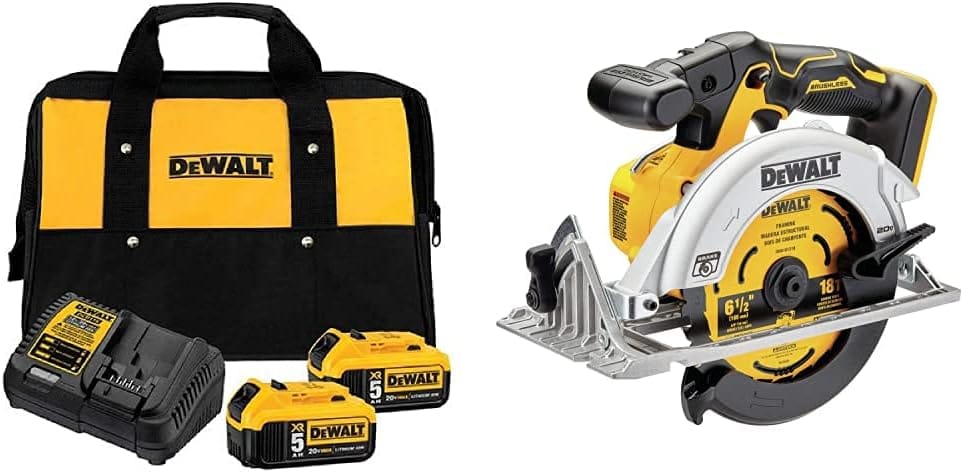
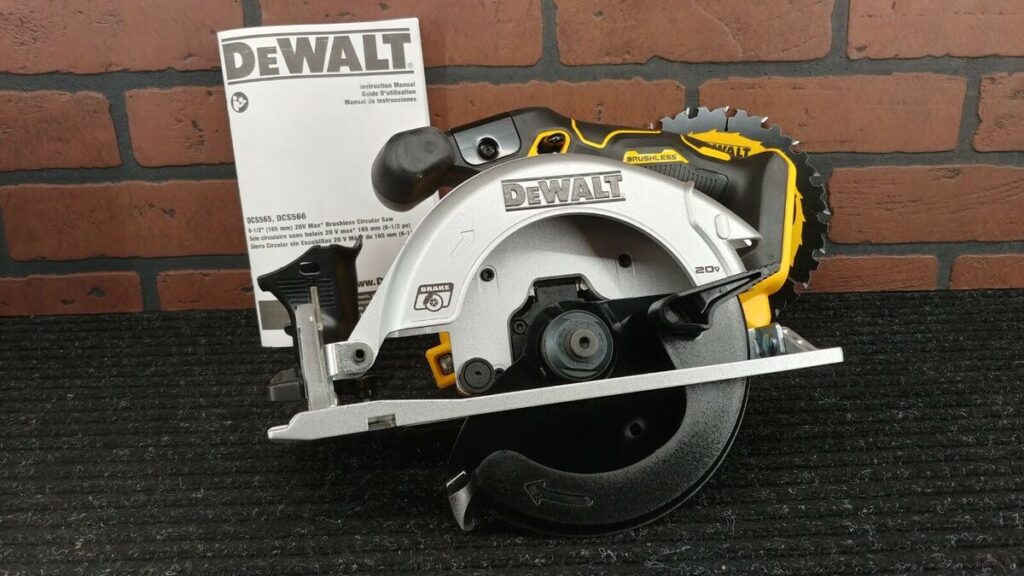
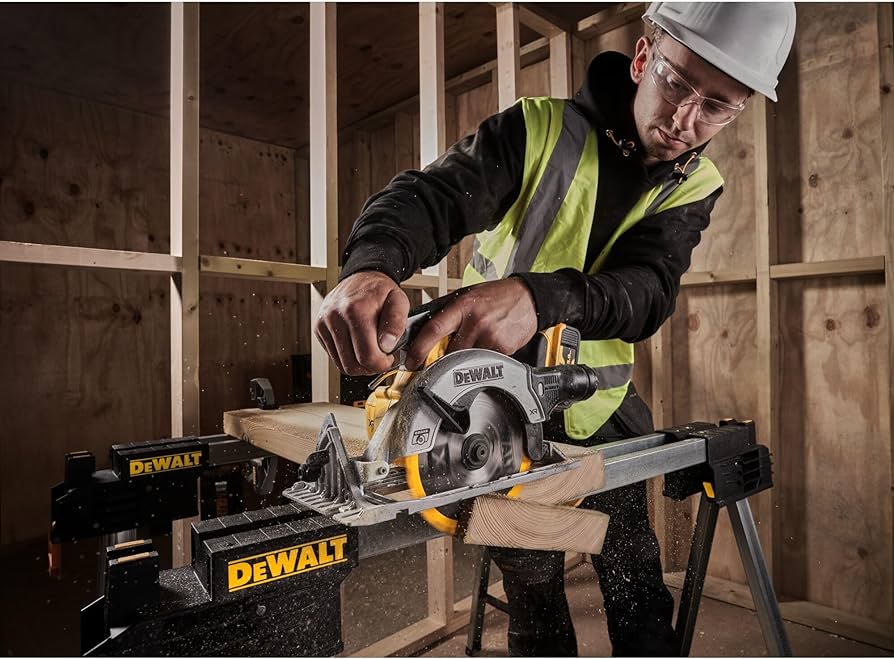
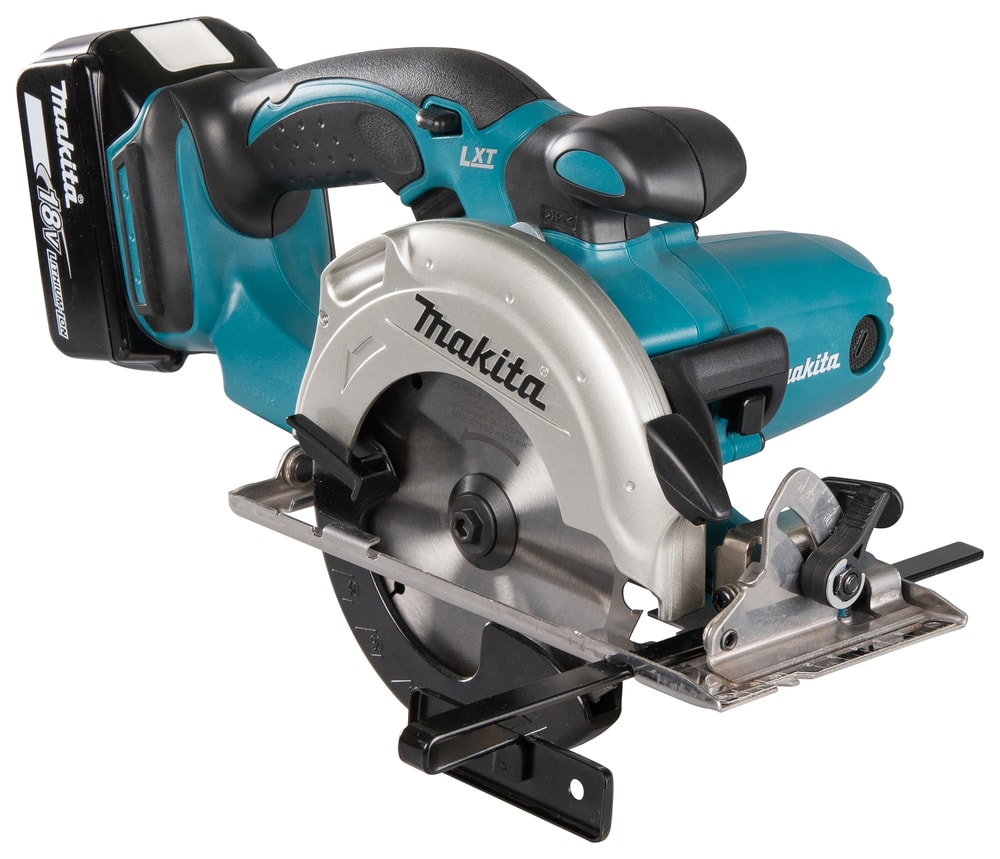
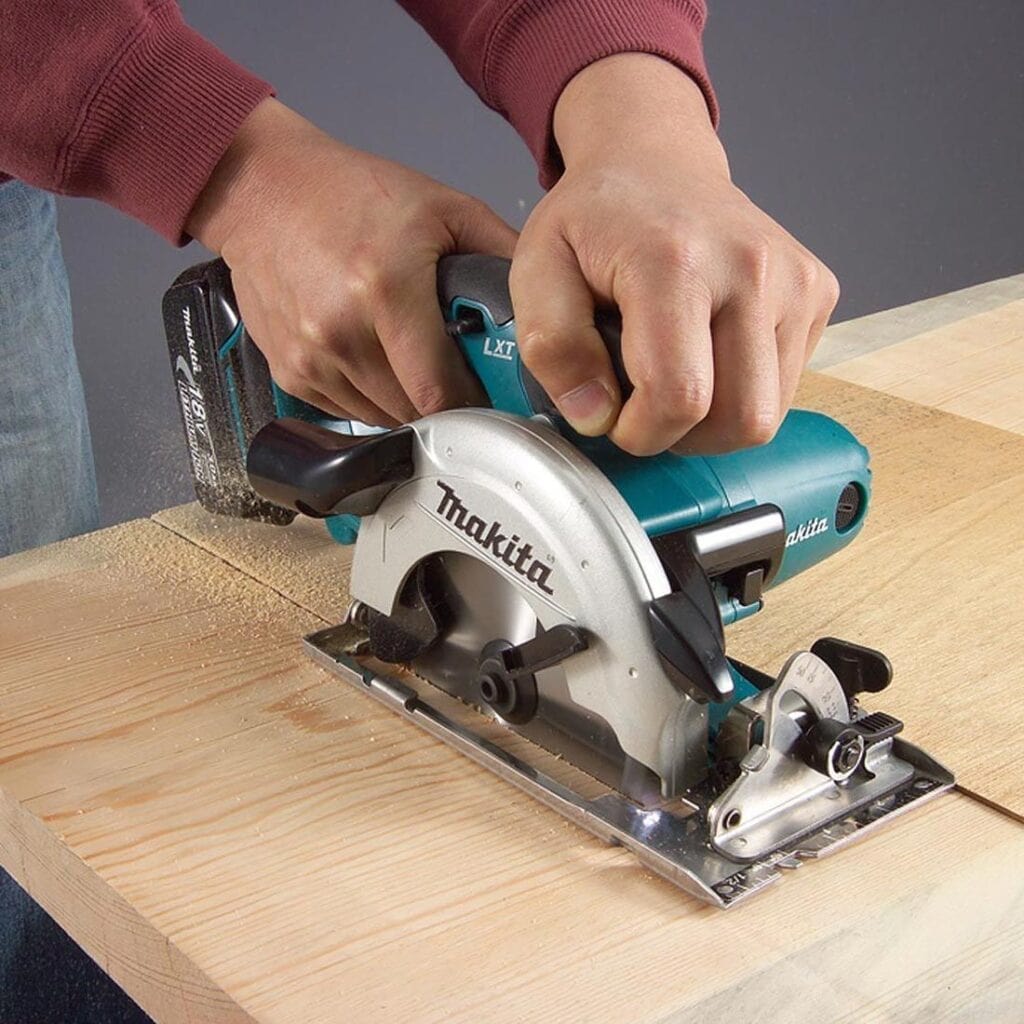
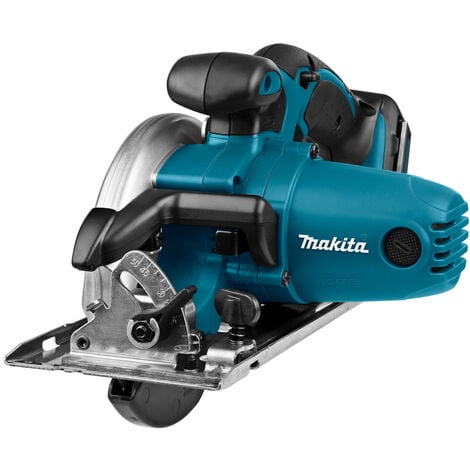
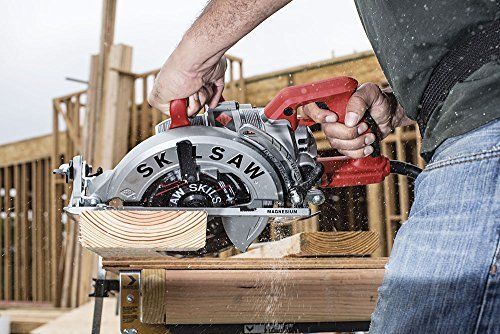
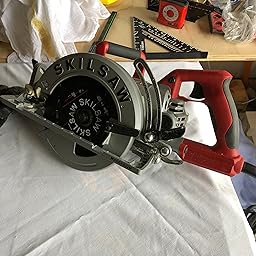
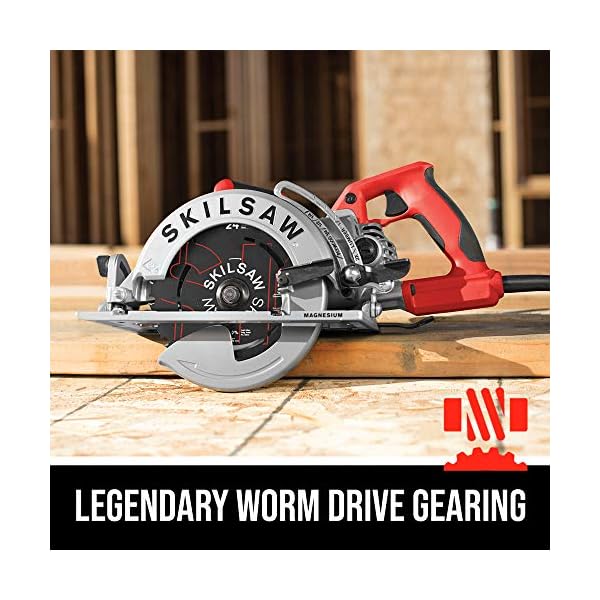
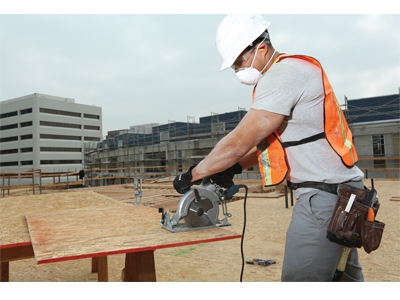
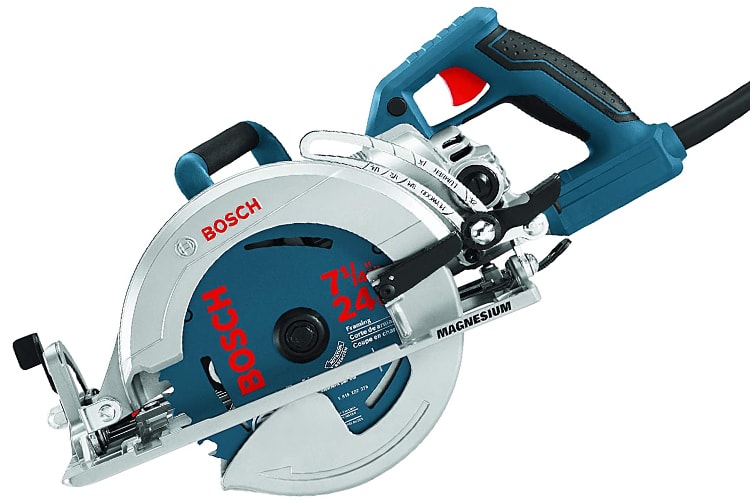
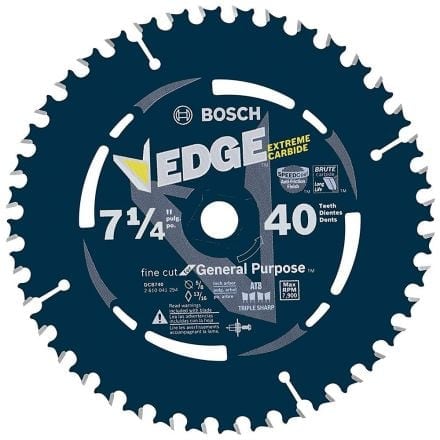
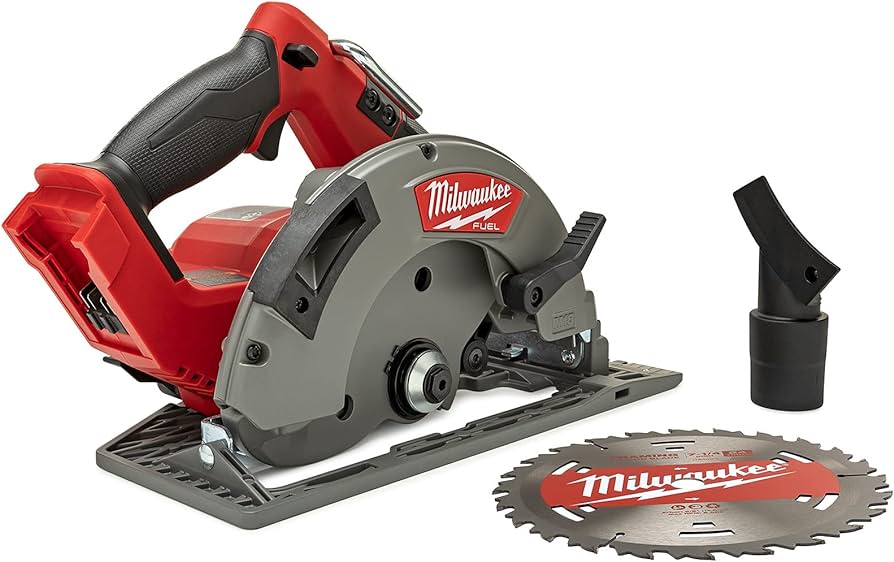
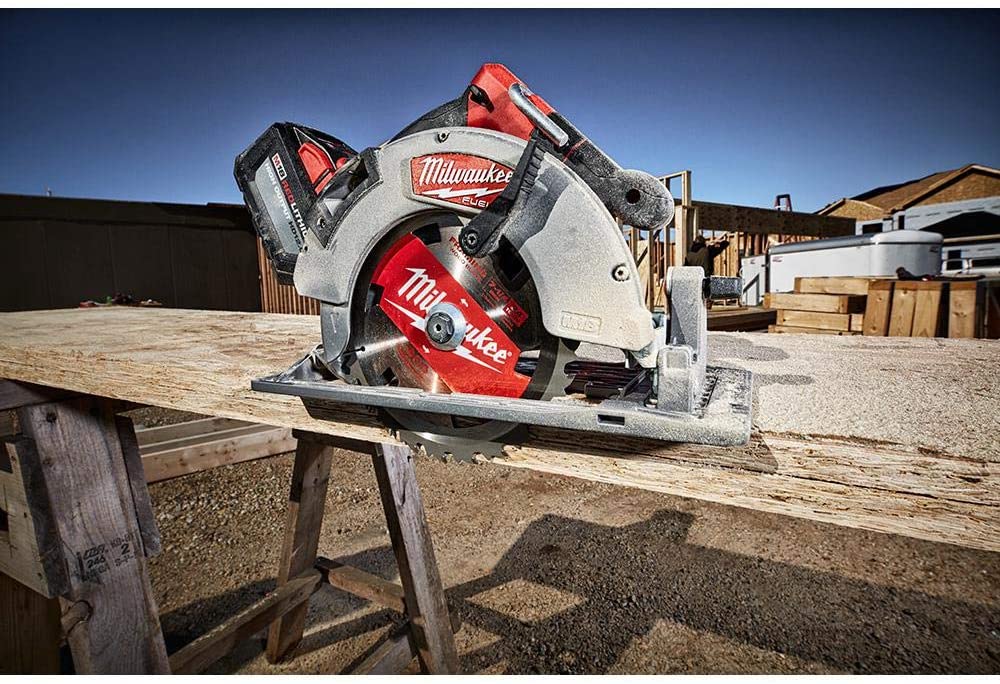
I will buy a Hitachi C7ST because this review.
Thanks!
Thanks Marcelo – glad we could help.
I like all the above saws, but can’t believe you didn’t cover the Milwaukee 6390-21!
Hands down the heavy duty old school worm drive skilsaw. It wins in longevity,,, ease of cutting the straightest longest free hand rip!
When used properly its weight is its advantage when most call it a weakness!! Will produce a better overall project and finish what it starts.